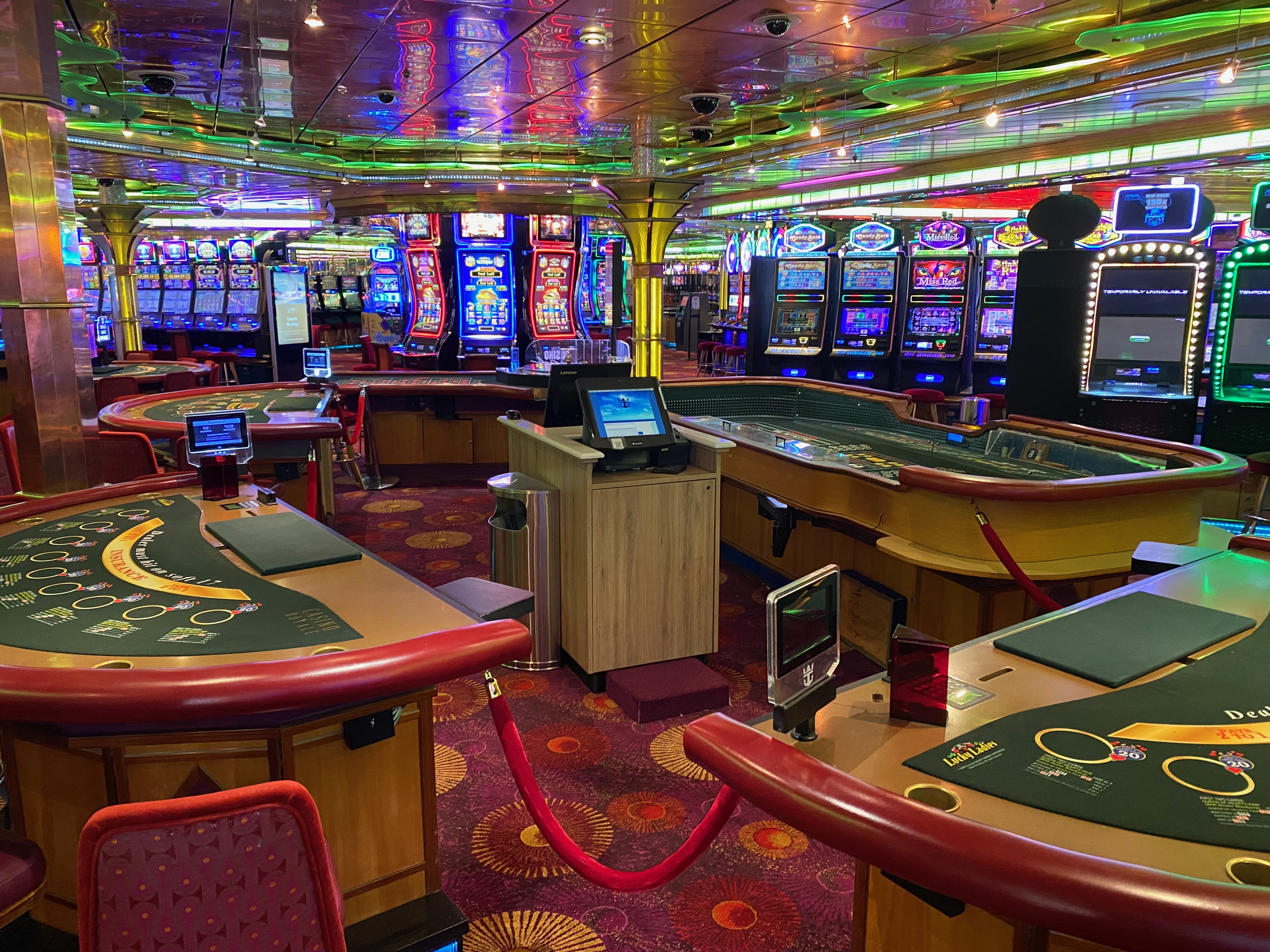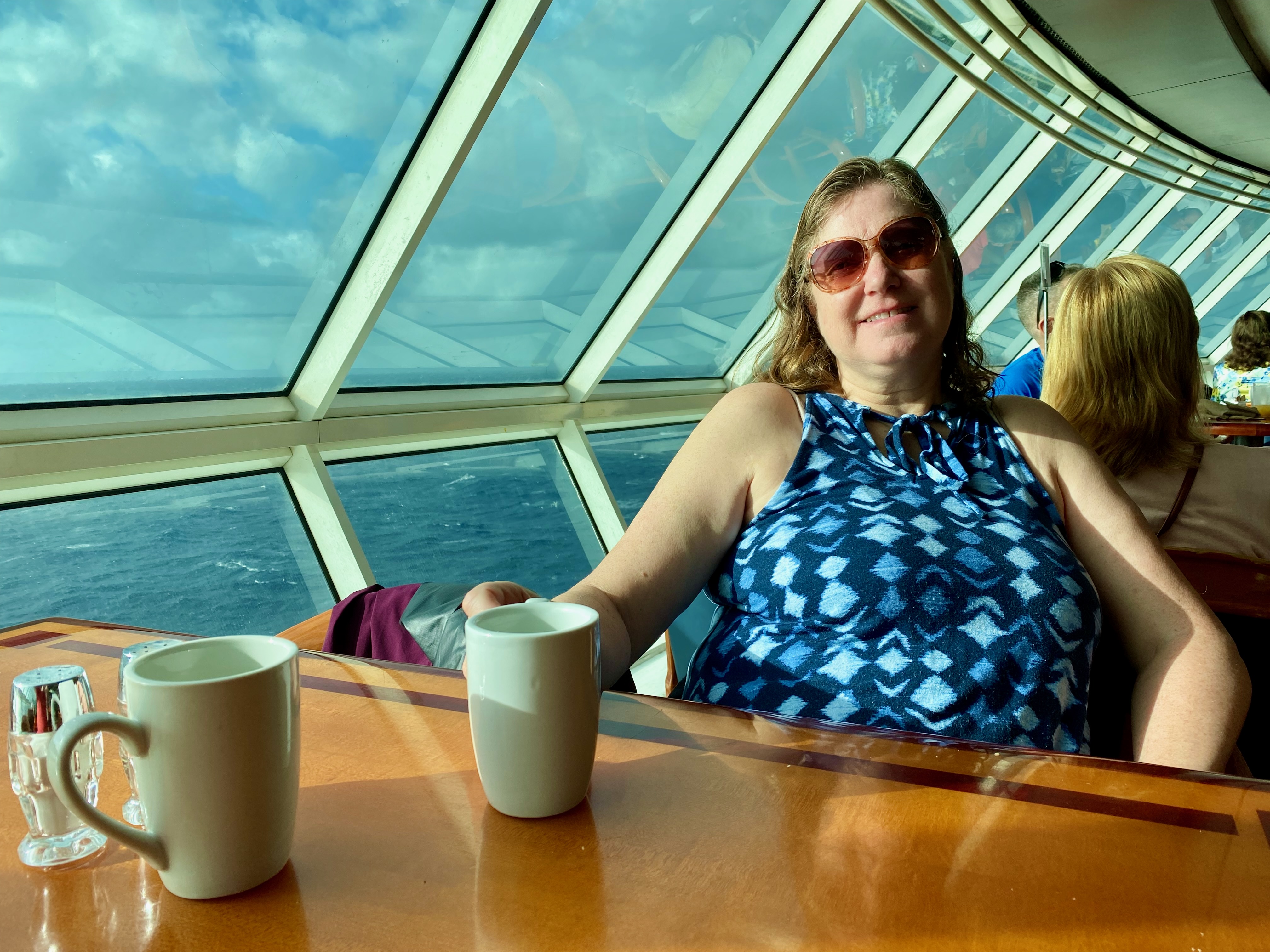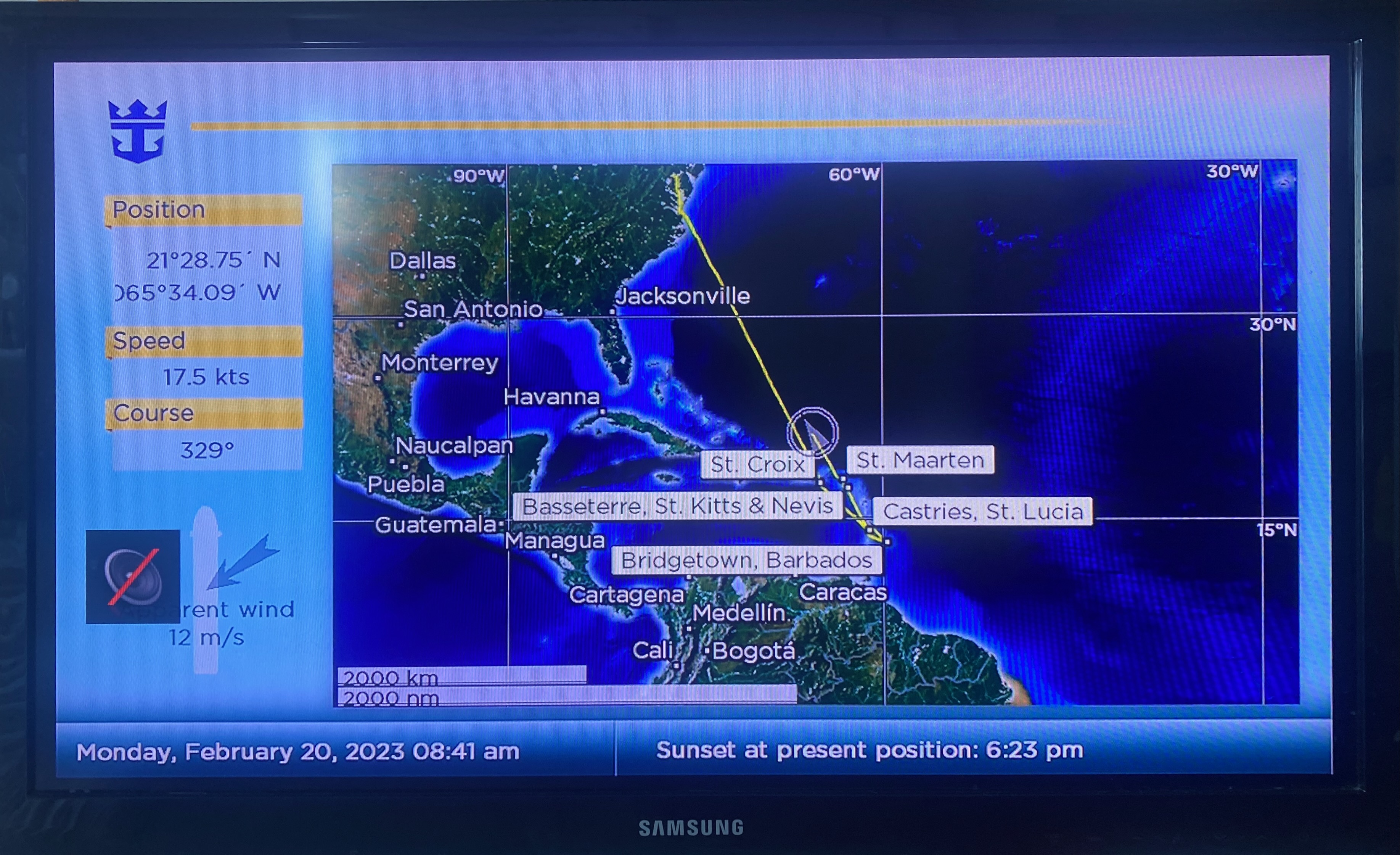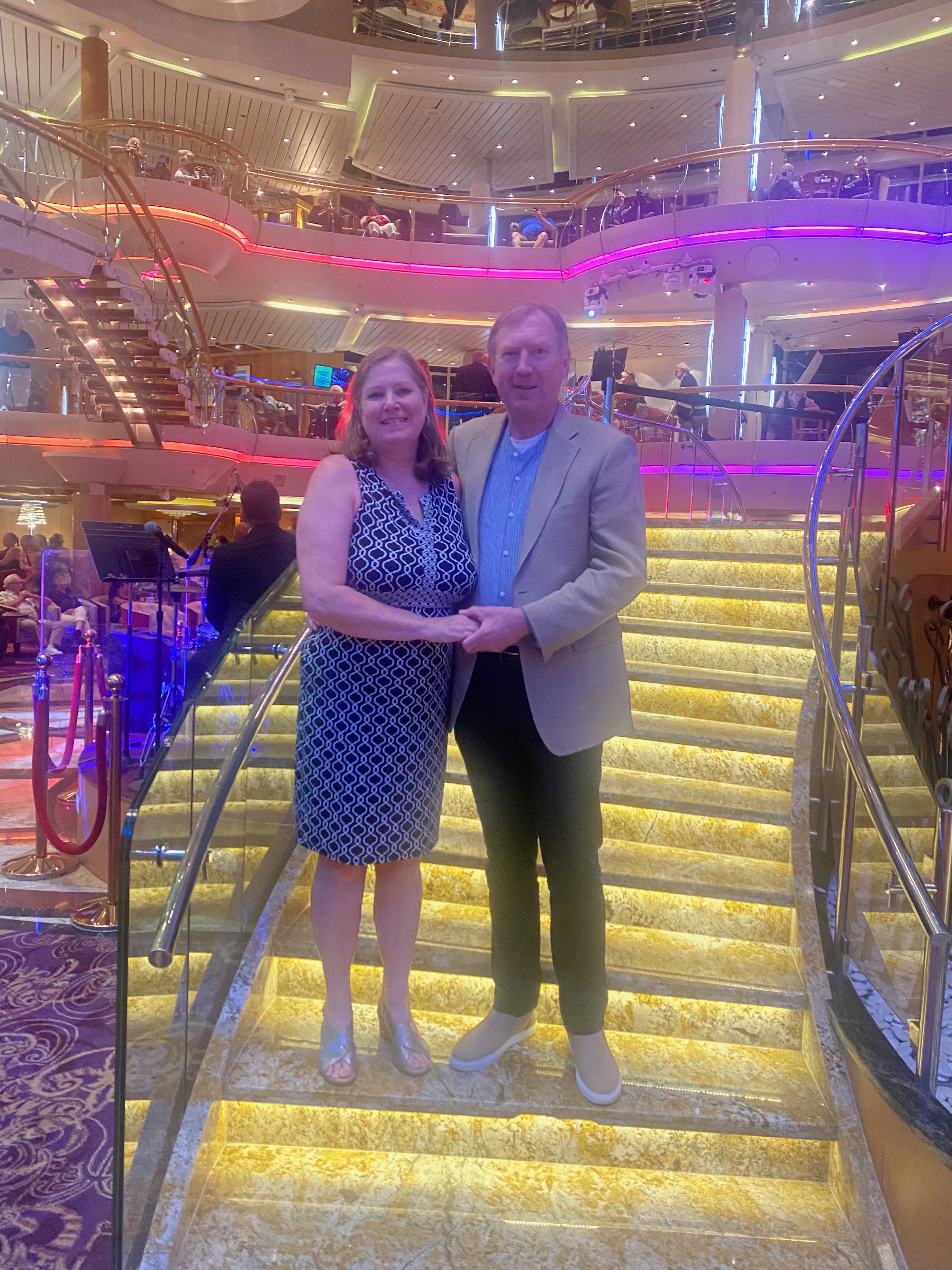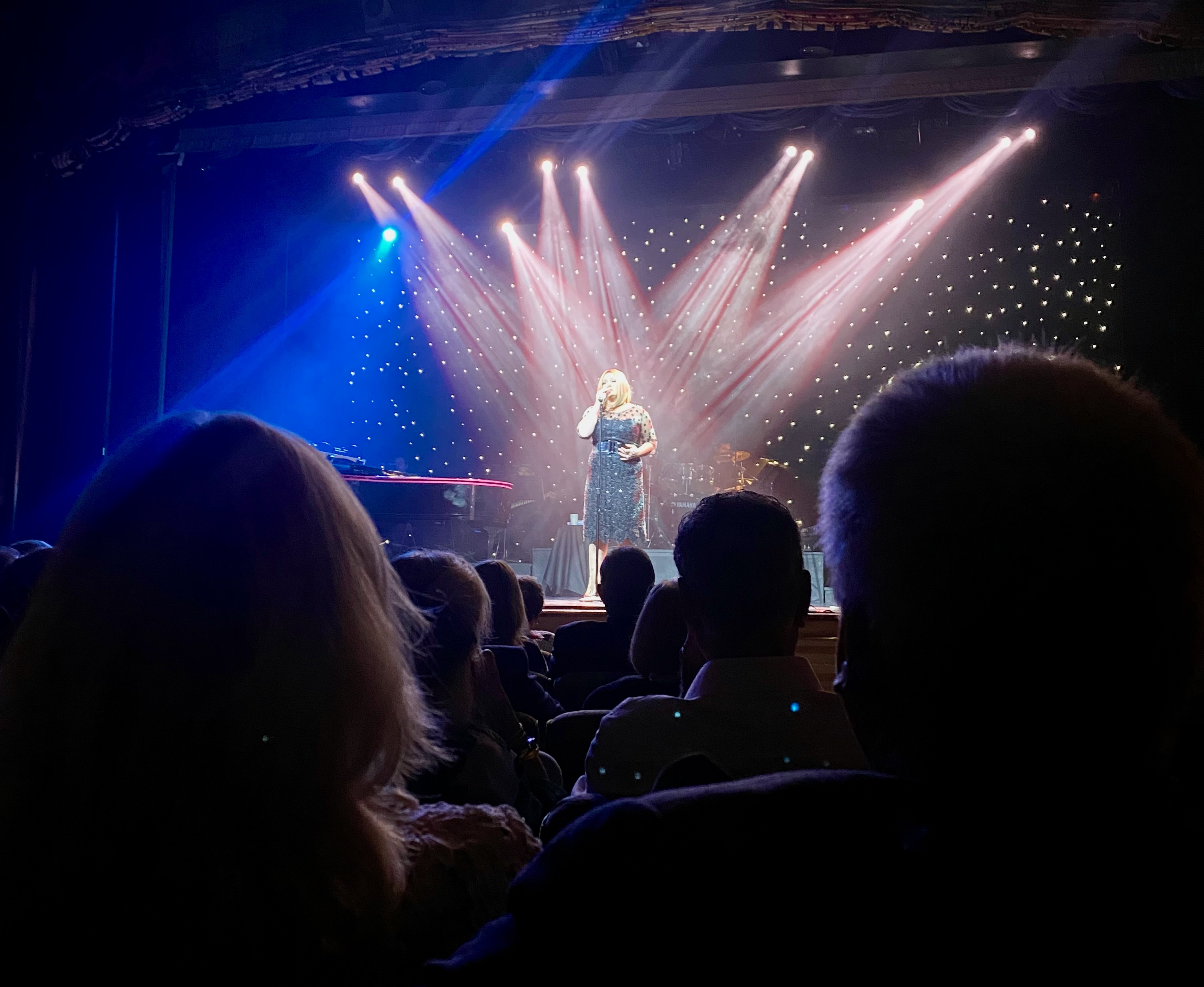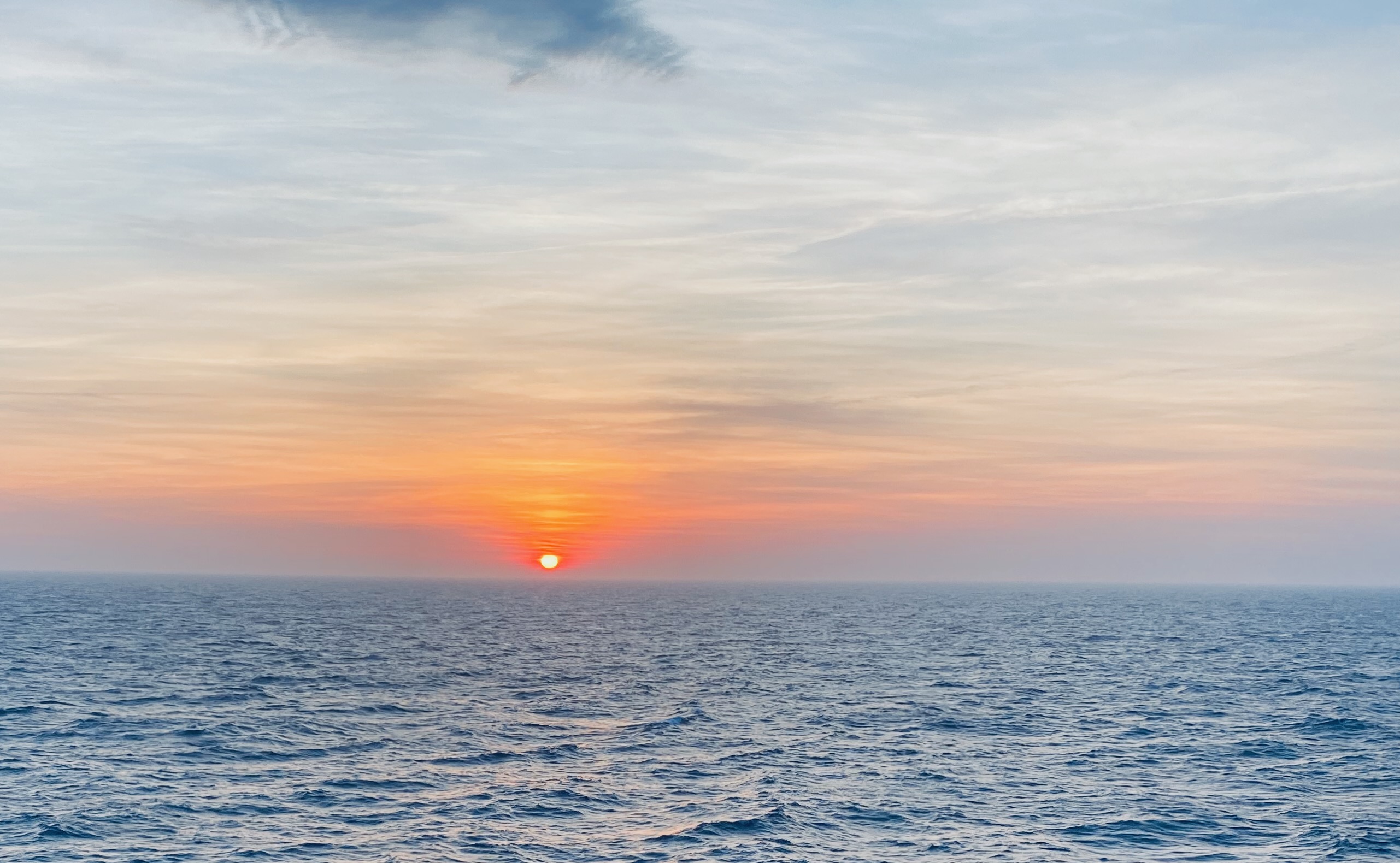With snow falling outside our Vienna townhouse today, it’s a pleasant diversion to think back on the cruise we took to the Caribbean last February. Elizabeth and I have settled into a pattern of taking a cruise together every decade, coinciding with a wedding anniversary. We cruised from New York City to Bermuda in 2003 for our 20th, around the Hawaiian Islands in 2013 for our 30th, and last February from Baltimore to five Caribbean Islands for our 40th. While the memories are still fresh in my mind, I thought I would share highlights from our most recent cruise for those of you who may be “Caribbean dreaming” along with me!
Baltimore was a convenient place to embark on our cruise. The port is only an hour-and-change Uber ride from our house in suburban Northern Virginia, saving us the necessity of flying to a warmer port like Miami. Of course, it also meant three days at sea before we reached our first port in the Caribbean, and three days back, but as I’ll relate below, passing days on a cruise ship on the high seas has its own pleasures.
Our first port of call, on February 15, was Frederiksted on the west end of St. Croix in the U.S. Virgin Islands. The town itself was not much to blog about, but the weather was sunny and plenty warm for sitting in a beach chair. We booked a snorkeling excursion that allowed us to swim in the warm, clear waters, where we could spot the resident sea turtles. We could see them on the bottom about 15 or 20 feet below the surface. They would then rise up every few minutes to grab a breath of air before diving below again. They are used to people and didn’t mind us lurking 10 or 15 feet away. We swam twice, first near the pier and then at Paradise Beach. We both got a bit sunburned!
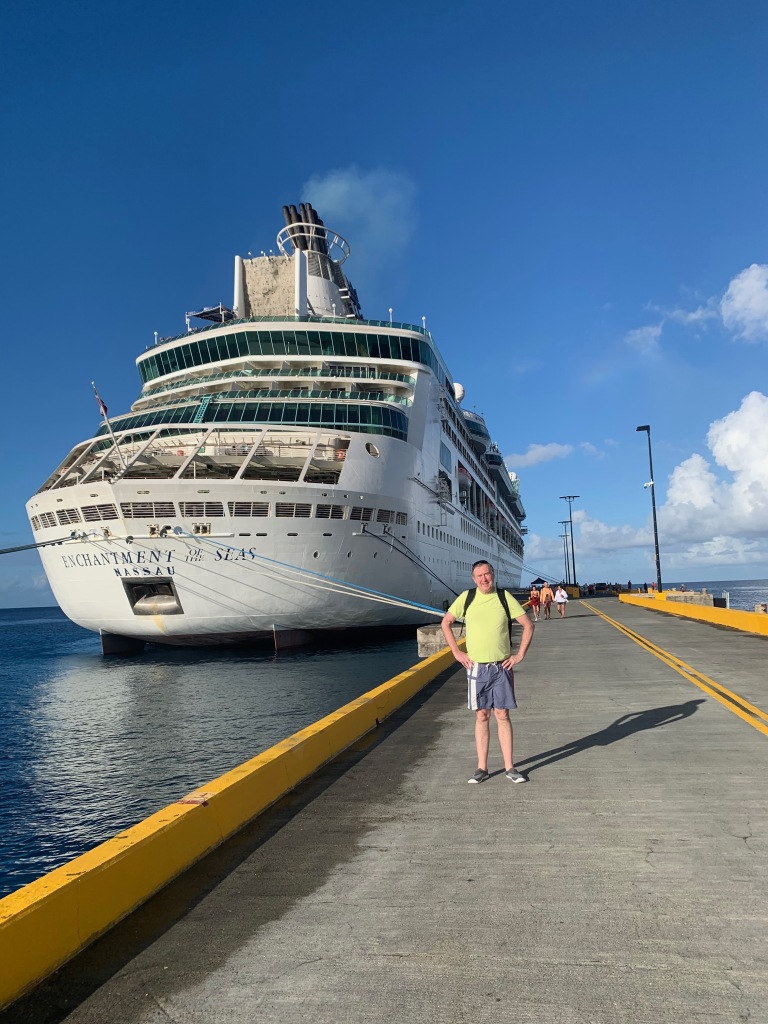
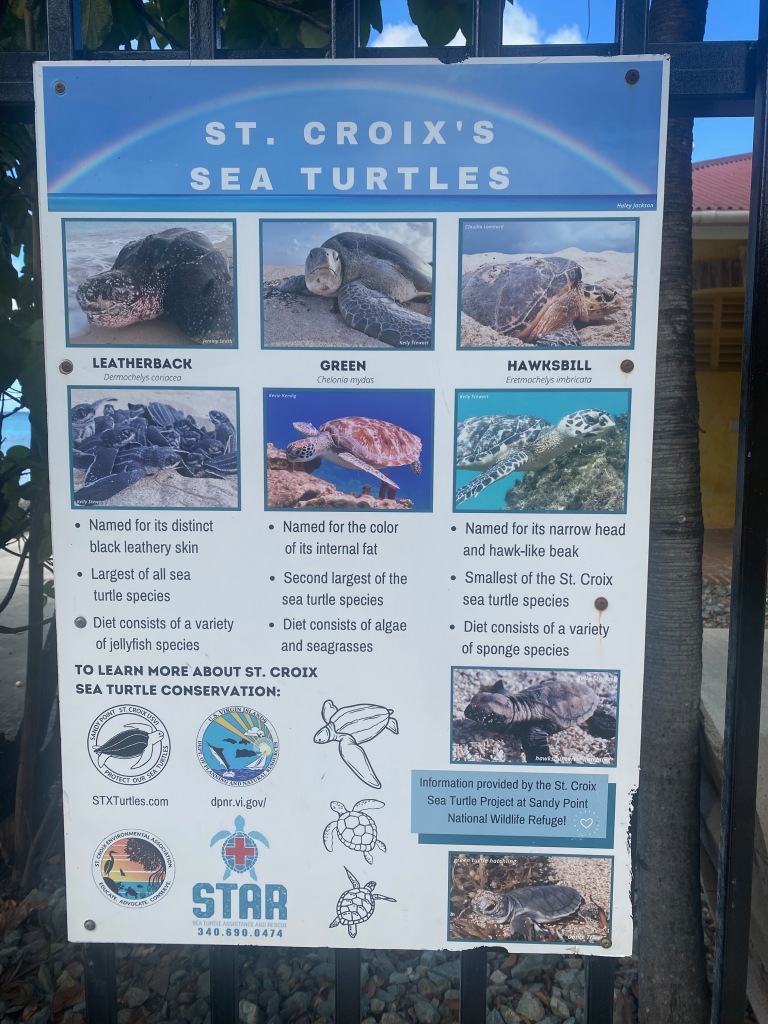
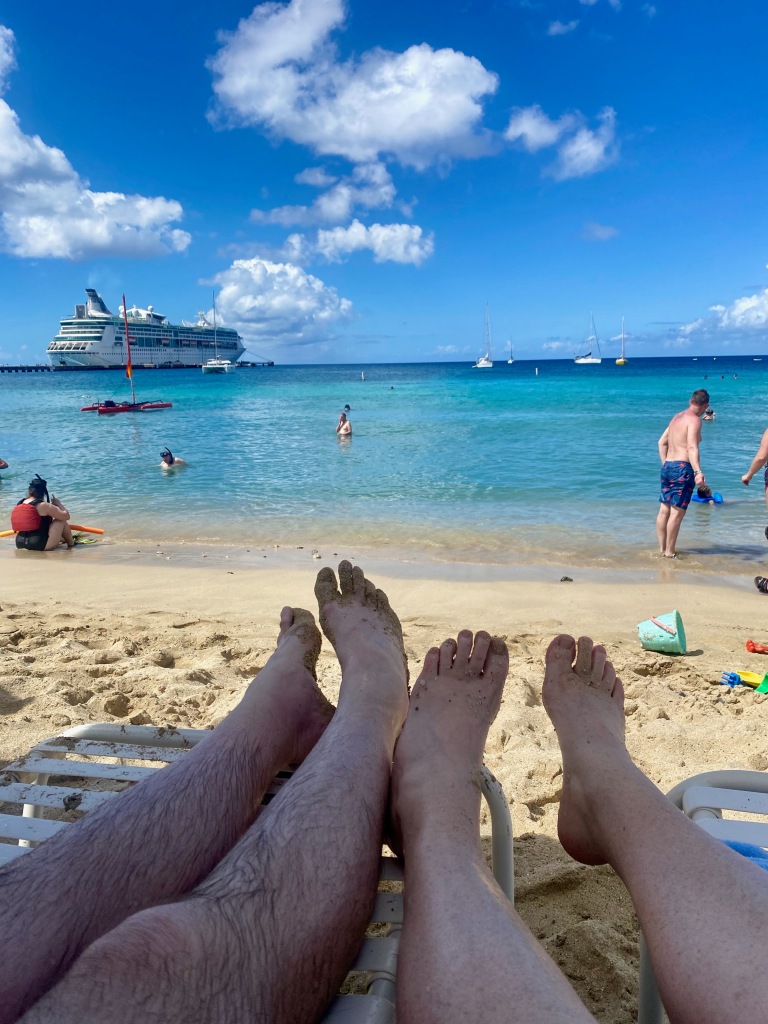
The next morning we docked at Castries on the island of St. Lucia. This was the poorest island we visited but also the one most densely covered in tropical rainforest. We booked a tour around the island with our native guide Kingsley. He told us about tapioca cake, a favorite food of the island, and about the native wildlife of mongoose, boas, and vipers (which I can thankfully say we did not encounter in person). The main crops grown on St. Lucia are bananas, coconuts, and cocoa, which grow all year around. We stopped for lunch along the southwest coast of the island with a grand view of the Pitons (rhymes with Tetons). You may have seen these striking formations on a calendar–green cones rising hundreds of feet above the coast. They are not volcanos but “lava plugs.”
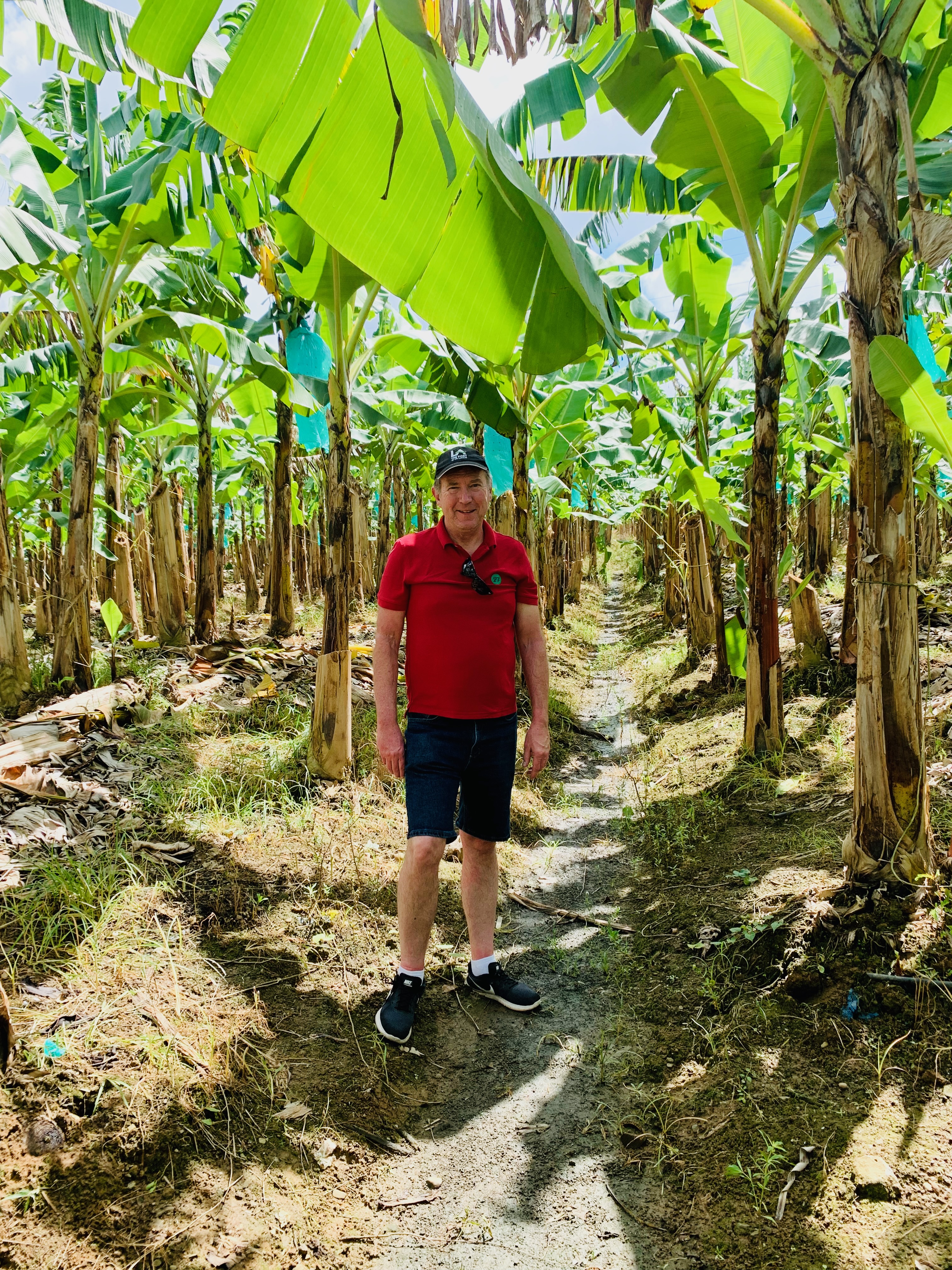
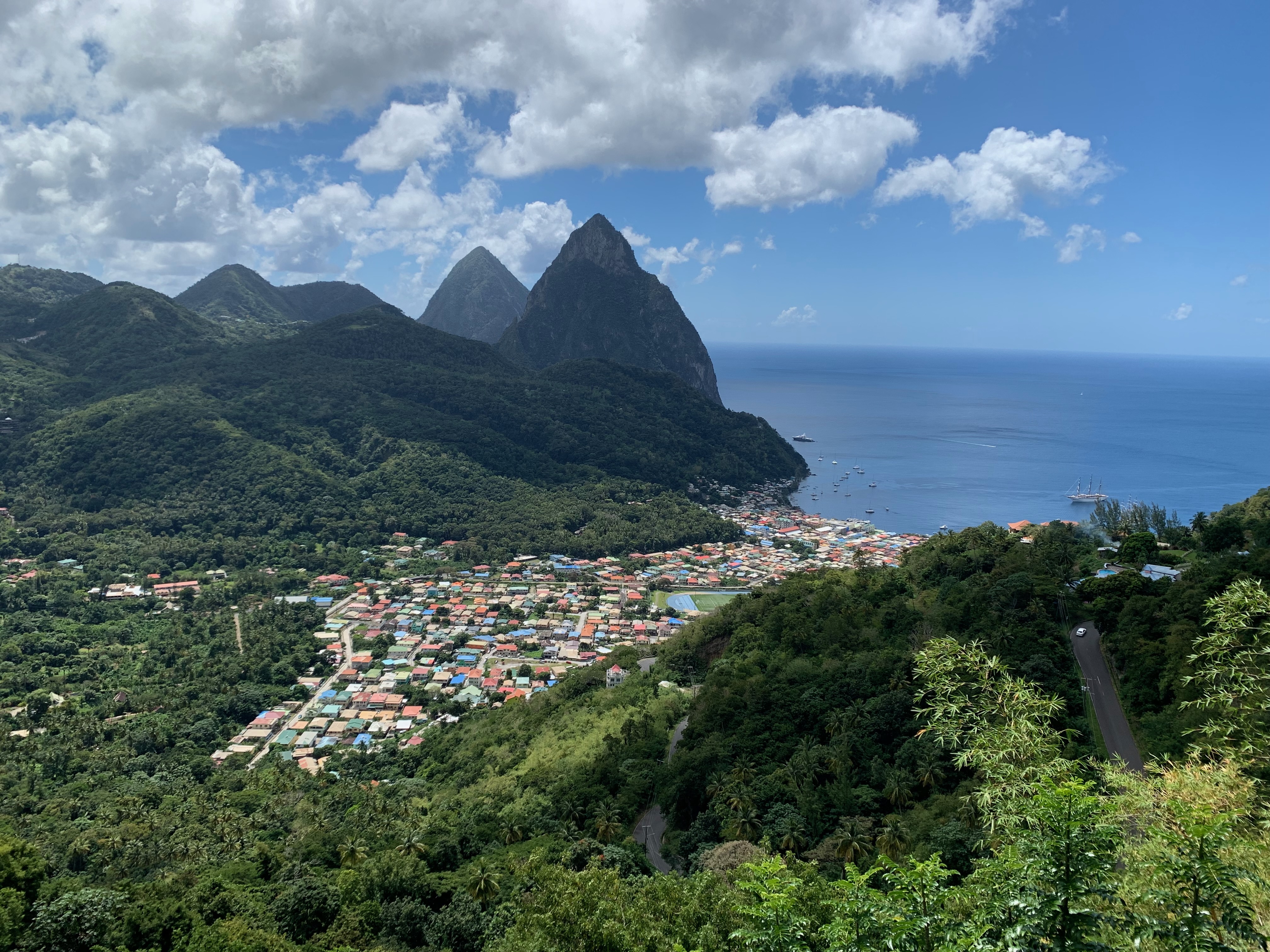
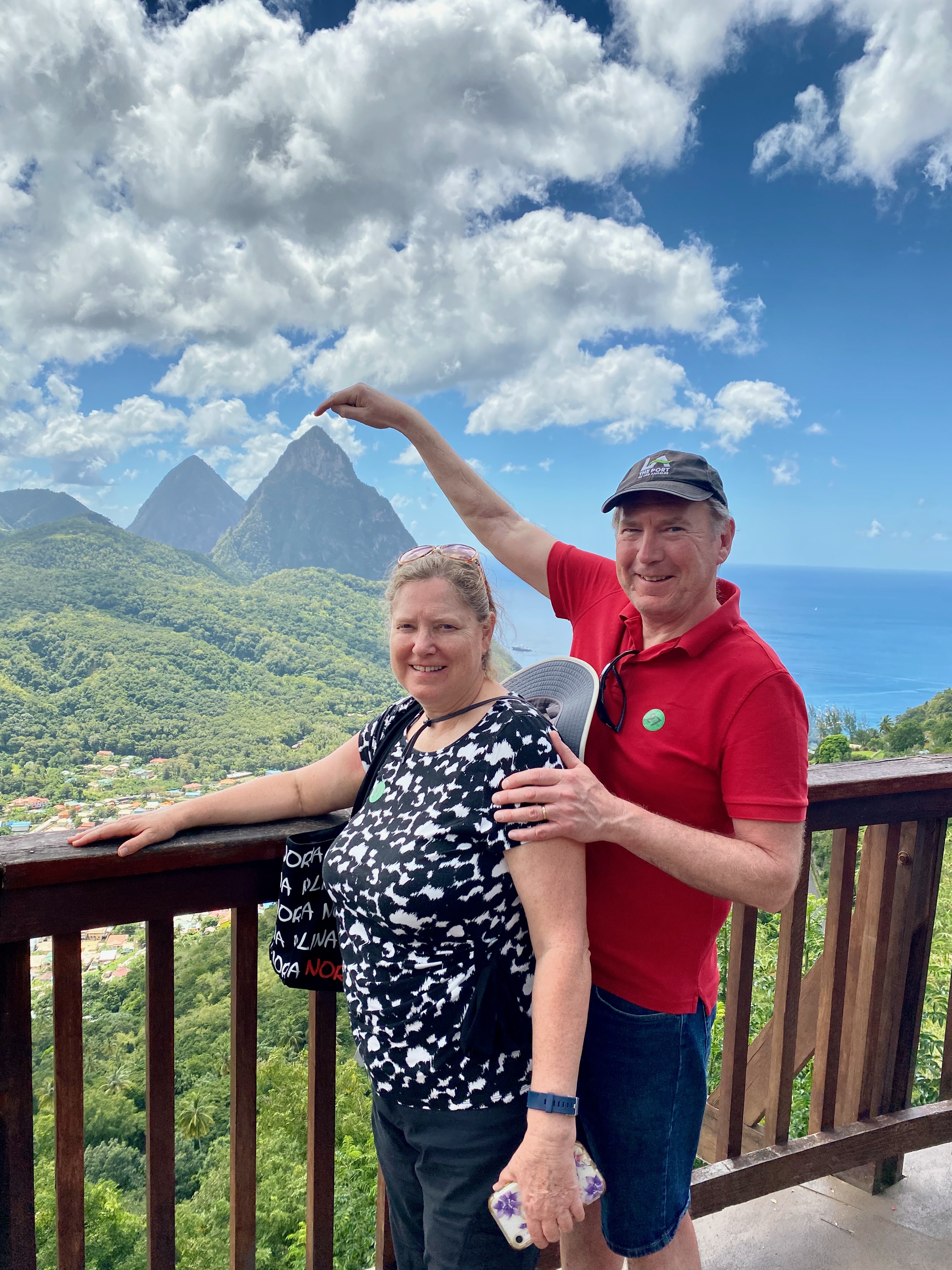
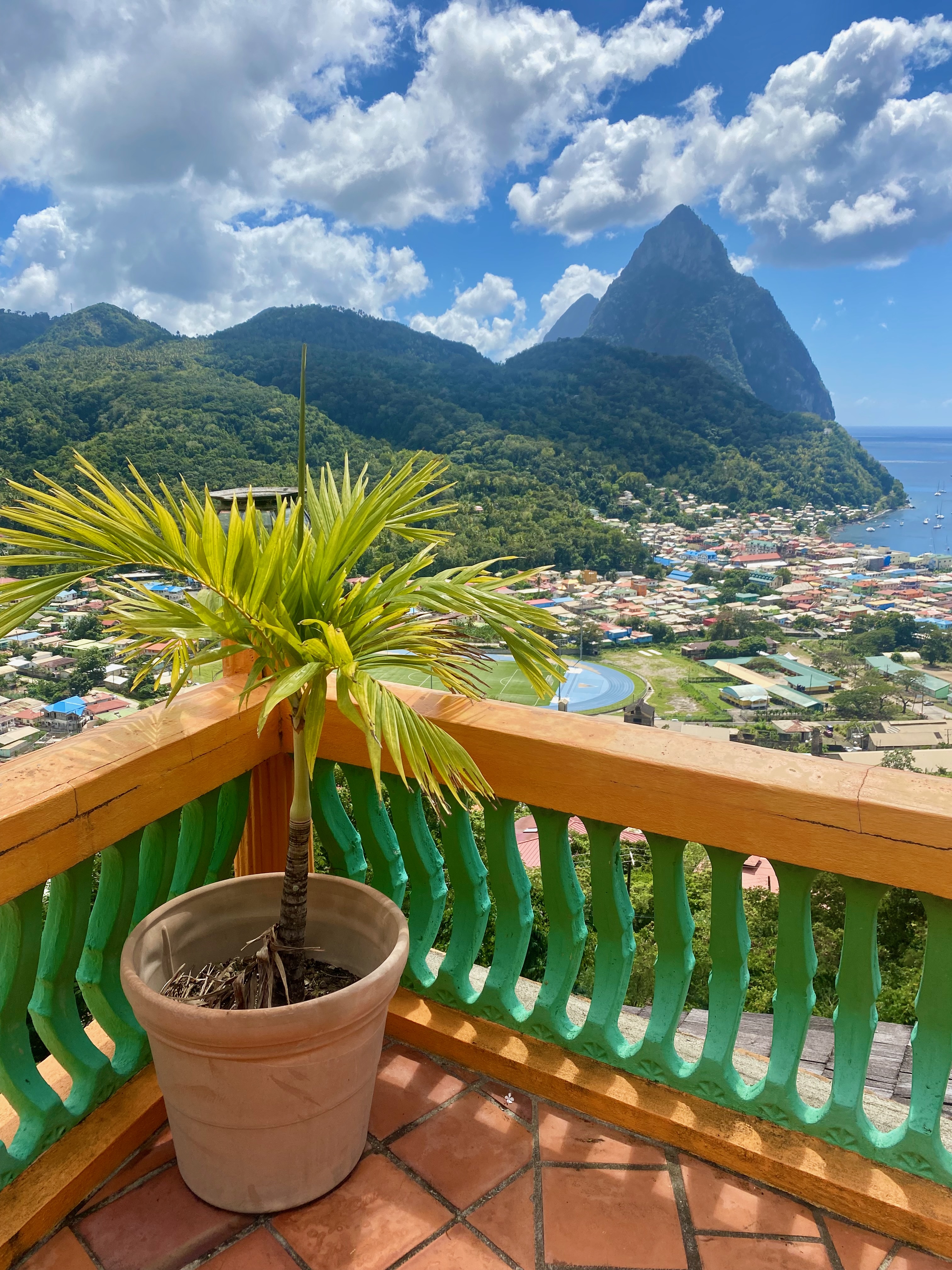
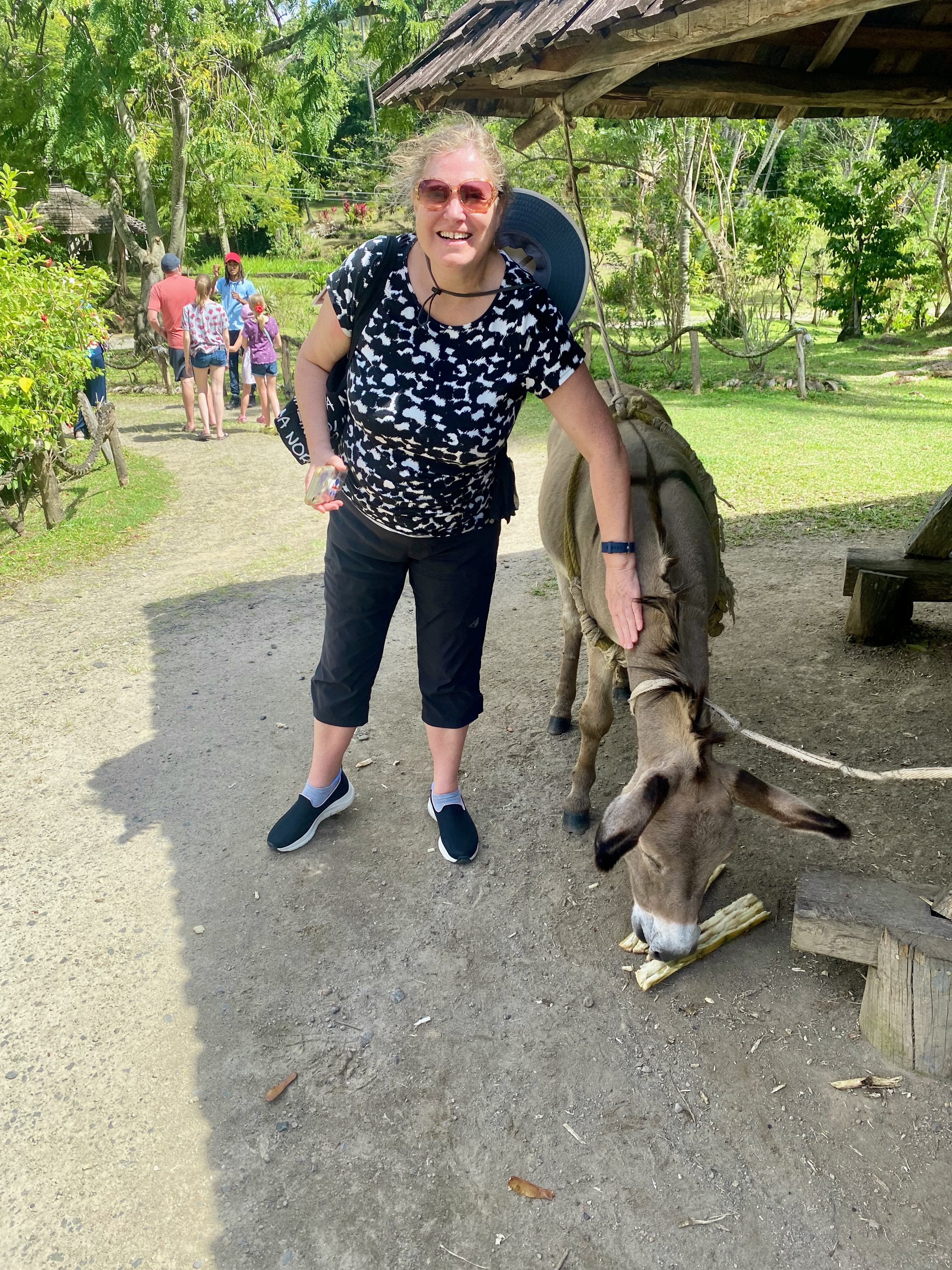
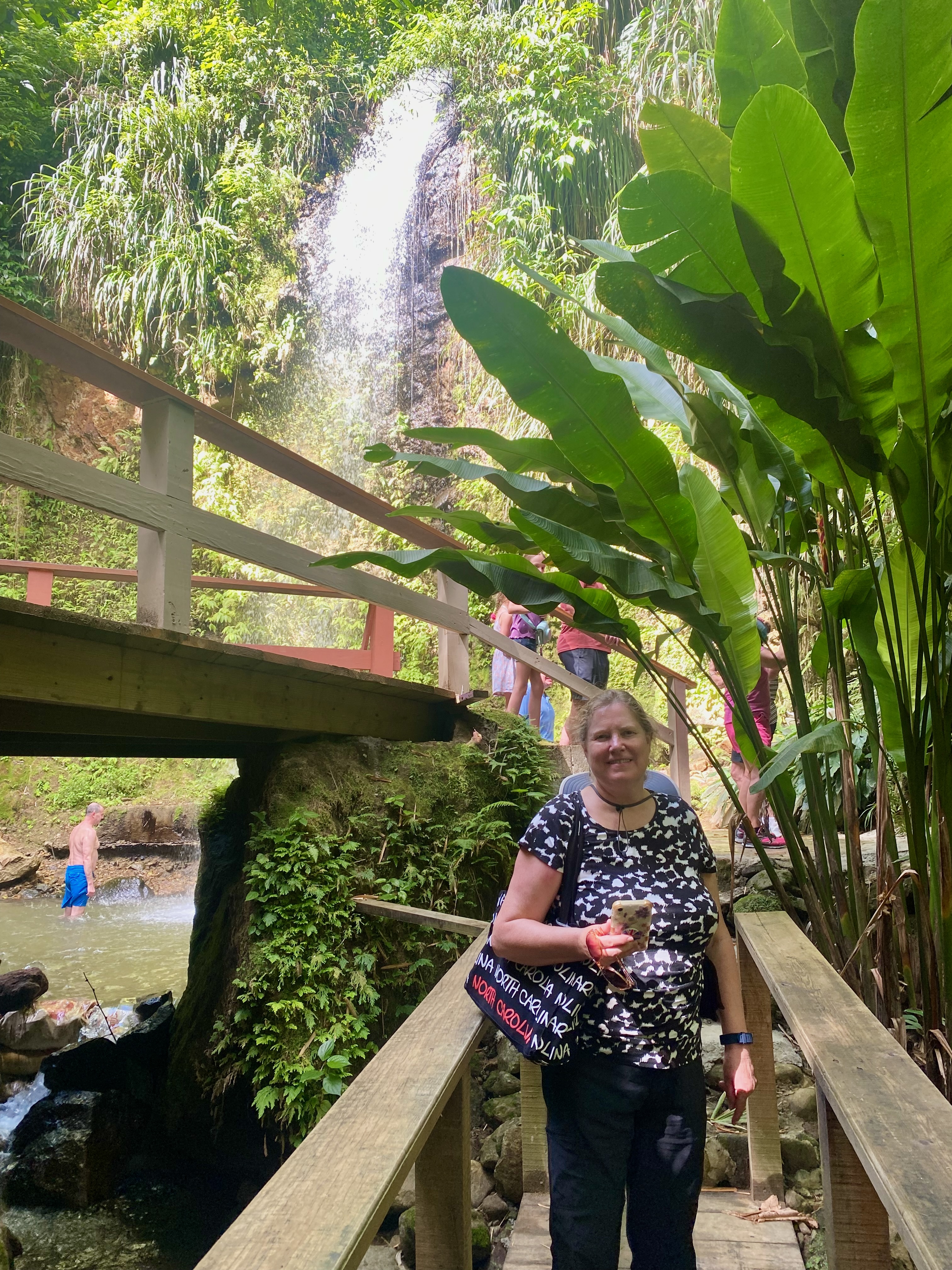
The next day we docked at Bridgetown, Barbados. We booked a shore excursion by bus with another informative guide. She told us the island was first occupied by the British in 1625 and never changed hands after that. It is home to the oldest synagogue in the Western hemisphere, founded in 1652. A 19-year-old George Washington visited Barbados for seven weeks in 1751. The guide said the 1651 Charter of Barbados was a model for the U.S. Constitution. At its colonial peak, the island was home to 400 Dutch windmills and 700 sugar plantations. Our tour took us to Malvern and Clifton plantations, Gunn Hill Signal Station, and St. John’s Parish Church. The church was set up on a cliff looking out on the more turbulent Atlantic side of the island. It was an appropriate place for the guide to tell us about the famous hurricane that struck the island in 1780, considered one of the most destructive on record. It killed 20,000 people and destroyed almost every building on the island, including those made of stone. As our tour drew to an end, Elizabeth and I got a good laugh when our guide, struggling as many people do with the “th” sound, made reference to the new British monarch, “Charles the T’ird.”

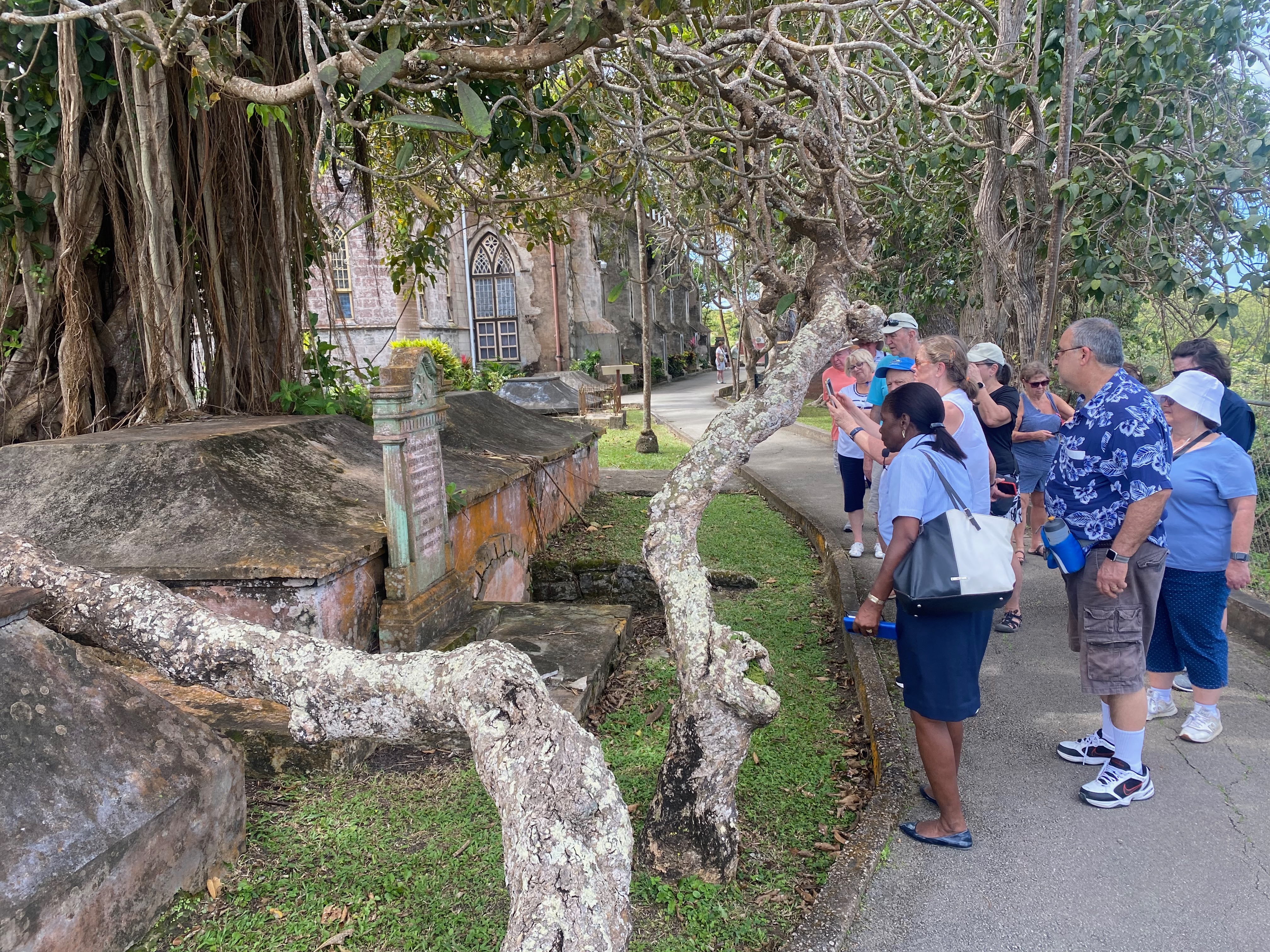
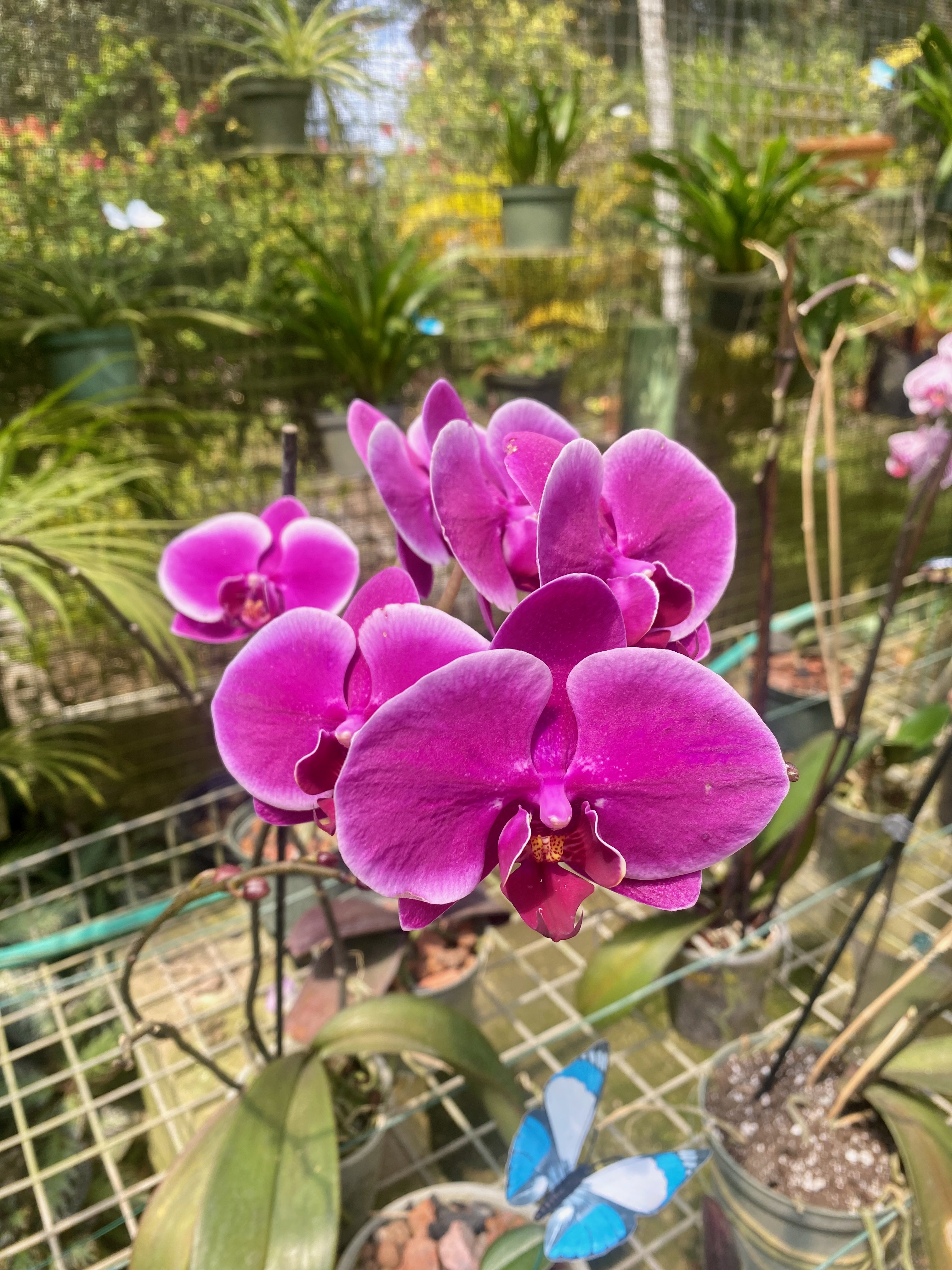
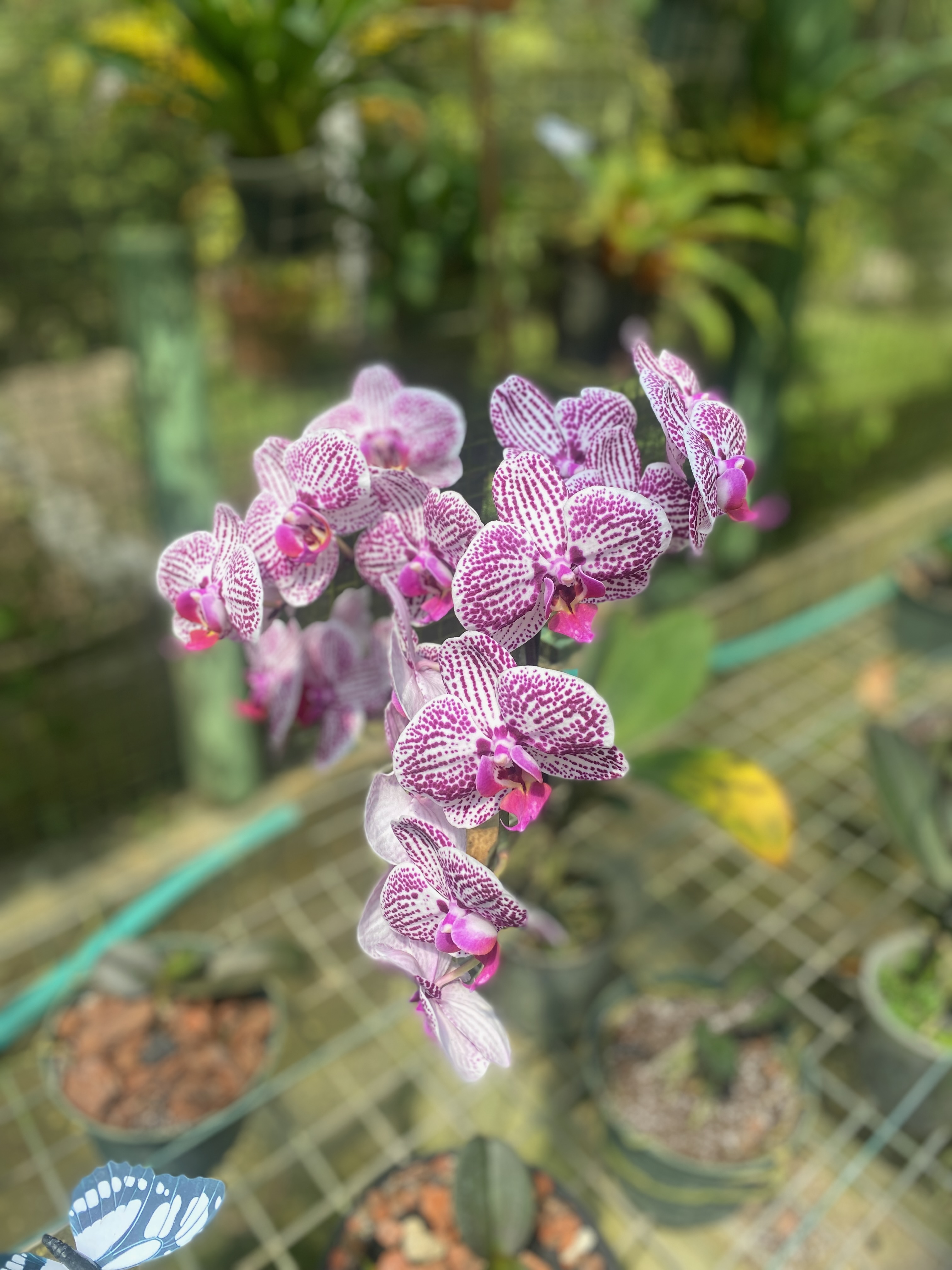
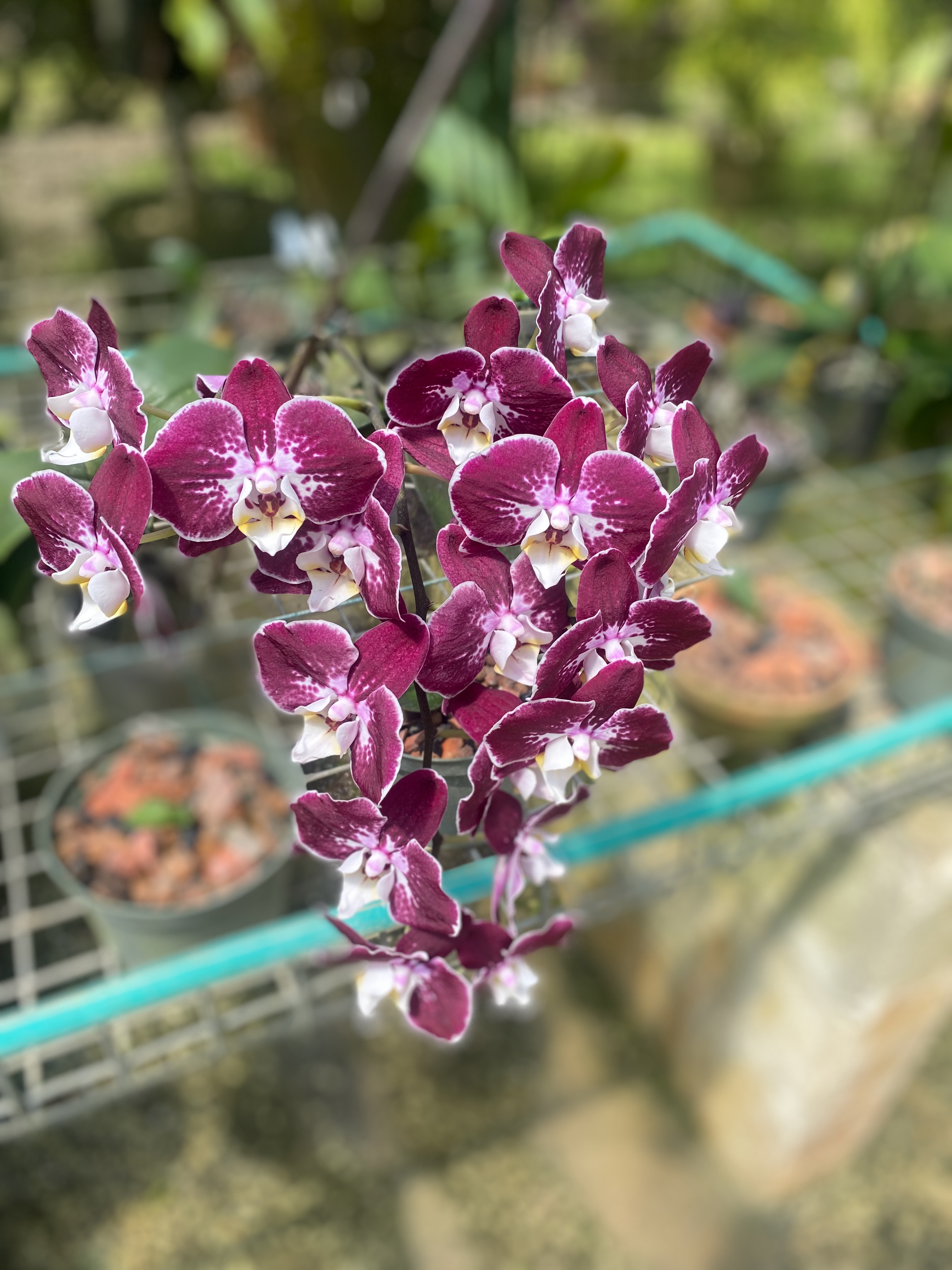

On the morning of February 18, we docked at Basseterre, the main city of St. Kitts. Once on shore, we wandered the city center, talking to volunteers at St. George’s Anglican Church and buying a few goodies at the wonderful Amory Bakery nearby. Our first stop on the tour was the Wingfield Estate, where we strolled the lush gardens and I enjoyed a Carib beer. Our guide Eric told us the island was the first British settlement in the Caribbean and is thus known as “The Mother Colony of the Caribbean.” The historic and scenic highlight was the Brimstone Hill Fortress, “The Gibraltar of the Caribbean,” set high up on a hill with spectacular views up and down the coast. It fell to those pesky French in 1782 but was given back to the British the next year by treaty. From the southeastern end of the island, we could see its neighbor Nevis, birthplace of Alexander Hamilton.
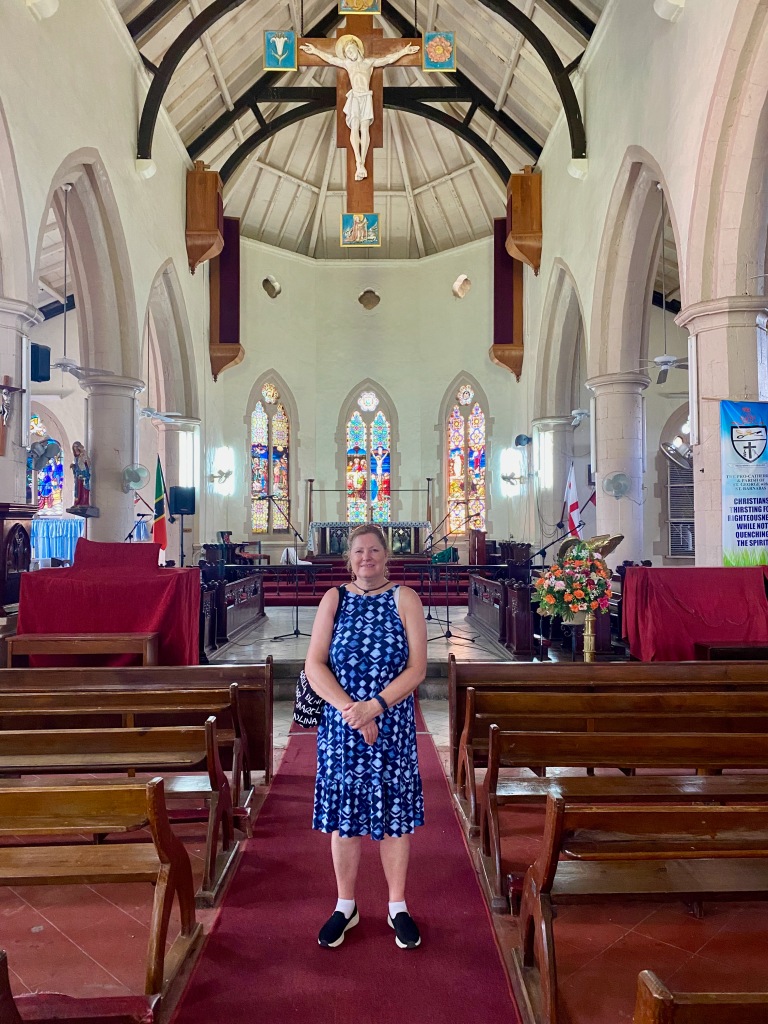
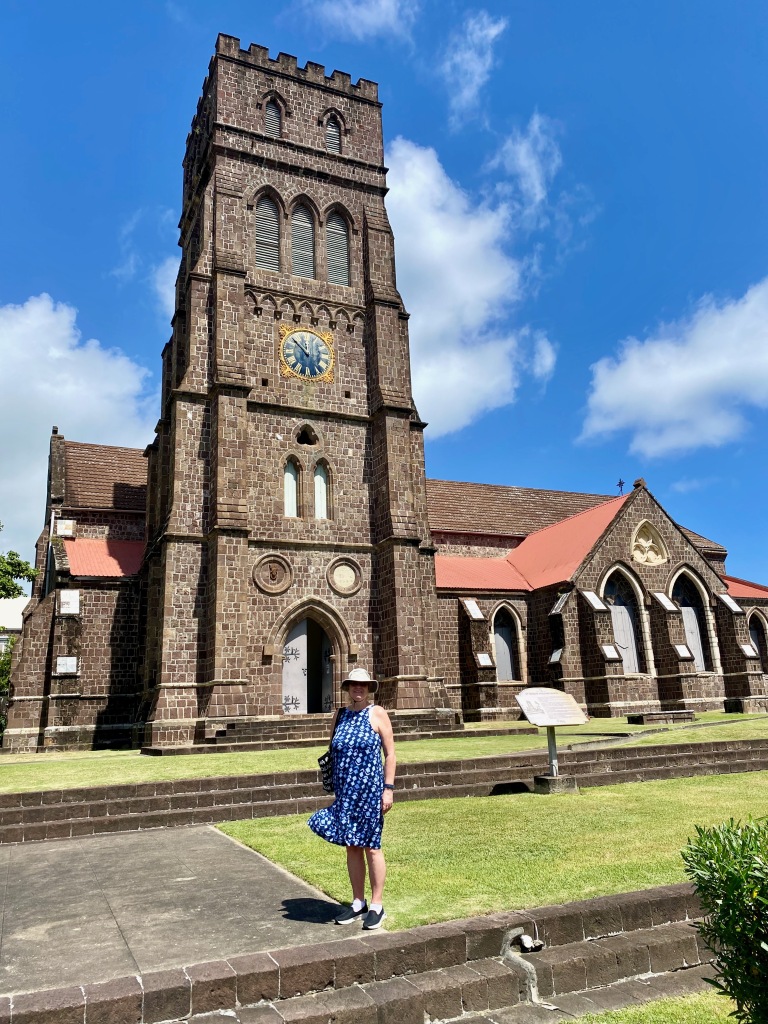

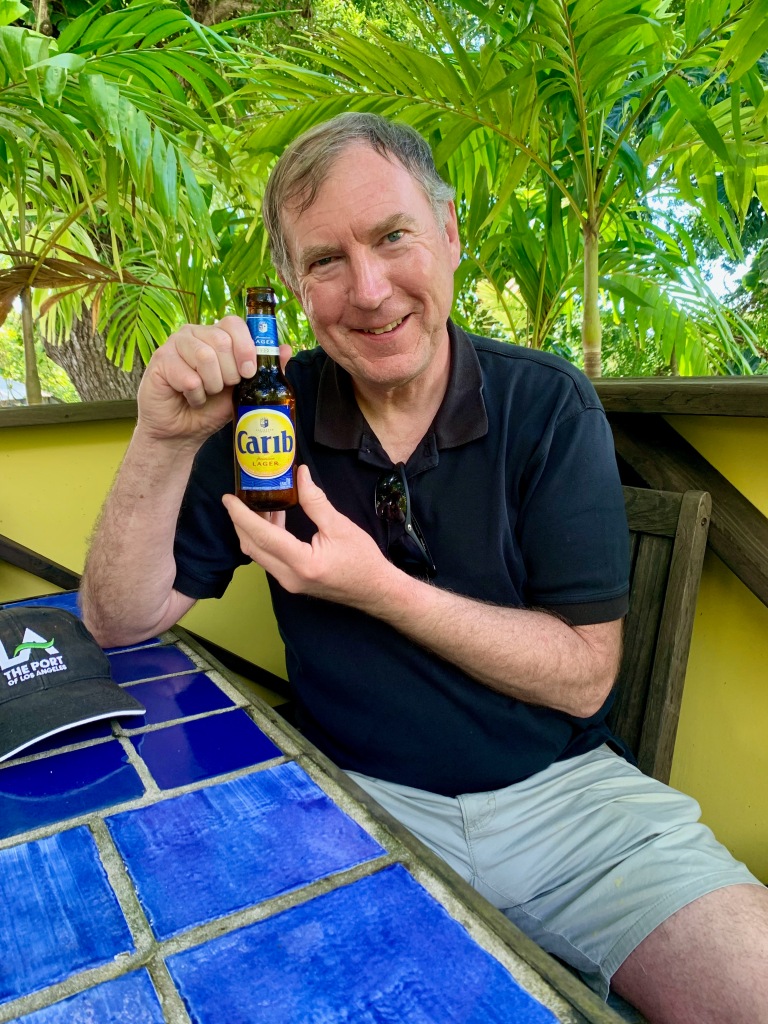

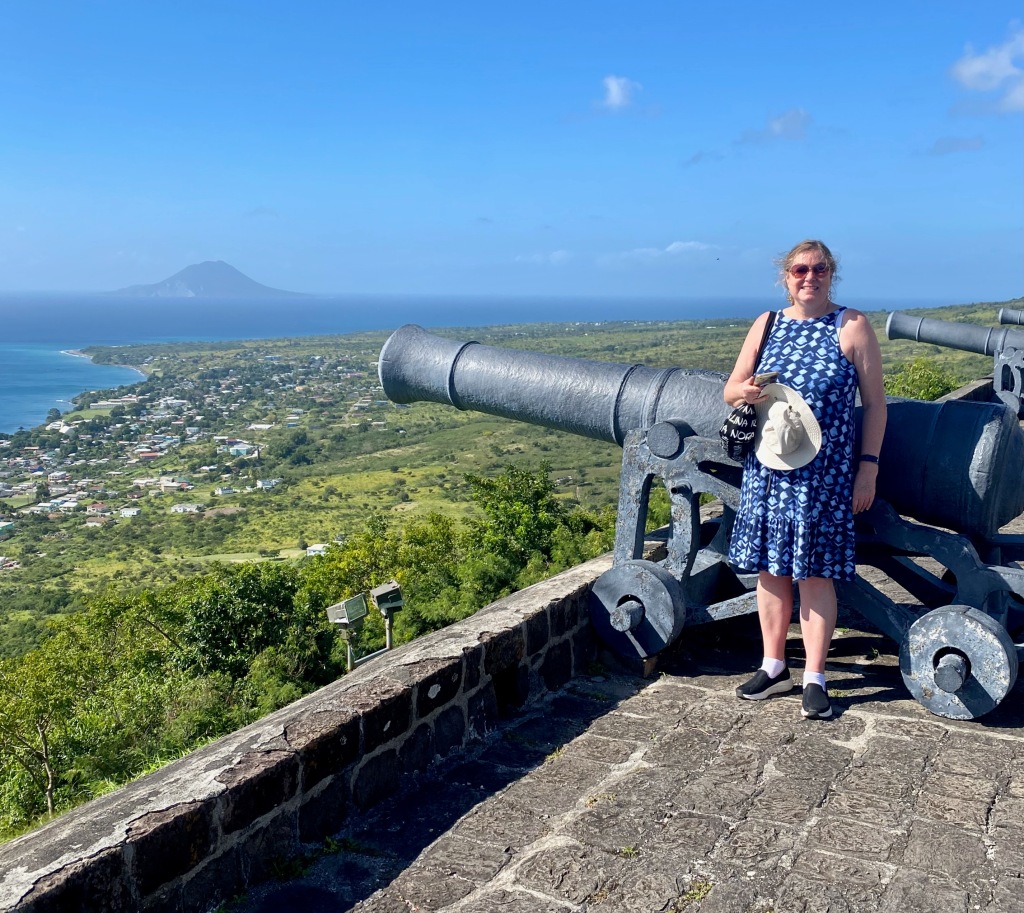

Our final stop in the Caribbean was the port of Philipsburg on St. Maarten. This is the Dutch side of the island with the French governing the other part. For our shore excursion, we took a bike tour with our guide Marcy. We hung out with friendly iguanas on the Atlantic side, which also offered us views of St. Barts Island, a French enclave where many celebrities own homes. We enjoyed a lunch down by the waterfront. I took a dip in the clear blue water, but it was too cold to be enjoyable. Hurricane Irma hit the island in 2017 flooding the beach front and depositing a small ship on Front Street.


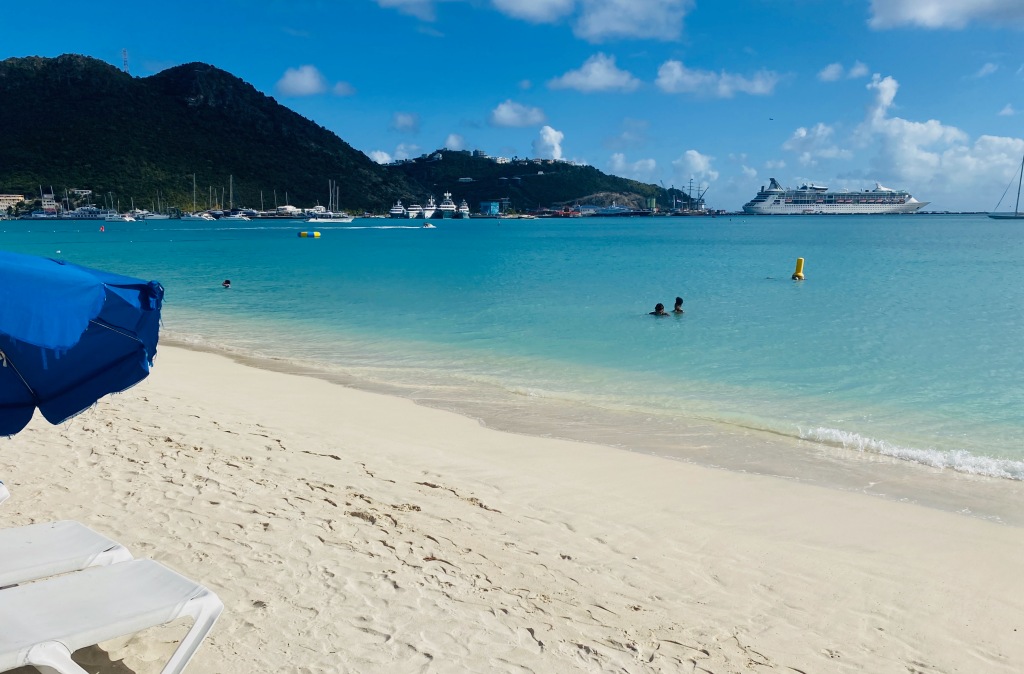
After St. Maarten, we set sail for Baltimore, 1450 nautical miles to the northwest. With the voyage to the Caribbean and back, we spent a total of six days at sea. We enjoyed life on the ship. We ate well–too well, I’ll confess–at the ship’s restaurants. The guest profile skewed older, and we talked to several people who were regular cruisers. Some had bought drink packages allowing them five drinks a day. We had an occasional drink, but the high prices ensured we practiced moderation. We saw several good shows, including one by a woman who did a credible job imitating the voice and style of the British pop star Adele. We also enjoyed Henry and the other pianists who would play requests at the lounges throughout the ship.
Our Royal Caribbean ship was called the Enchantment of the Seas. At 990 feet long, it’s considered a relatively small vessel for ocean cruising (only about 100 feet longer than the Titanic!). The ship had 11 decks, 1,142 staterooms, and can accommodate about 2,500 guests and 850 crew. Those numbers are very similar to the Titanic, but I refrained from noting that fact to other guests! One other factoid that jumped out at me from the fact sheet available on the ship is that one gallon of fuel will move the ship 80 feet through the water. As you’ve probably read, the trend in the industry is that the new ships are getting larger and larger. Our ship was among a shrinking minority in cruise fleets that are small enough to pass under the Chesapeake Bay Bridge, limiting the ships that are still able to sail from Baltimore.
